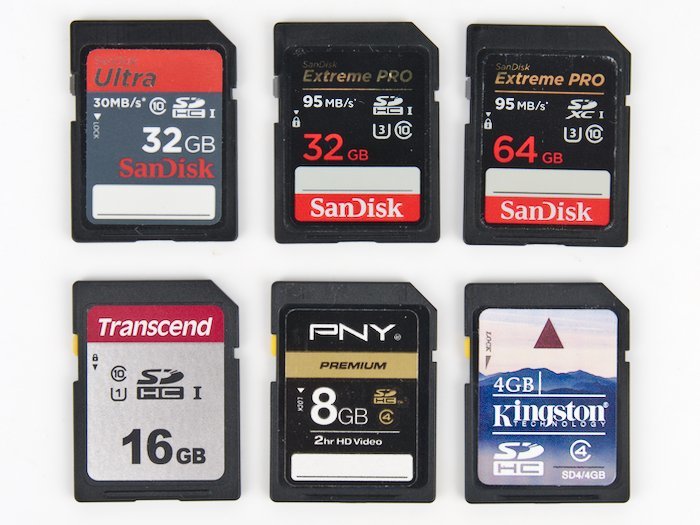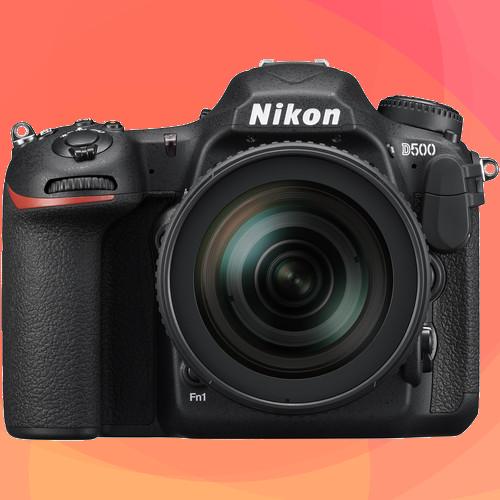![16 Used Pro Cameras Under $250 [June, 2024]](https://www.outsidetheshot.com/under/cameras-under-250.webp)
16 Used Pro Cameras Under $250 [June, 2024]
- Nathaniel Stephan
- Cameras under
- March 12, 2024
Table of Contents
Professional cameras have better ergonomics, built quality, and features. They are often better than newer entry level cameras.
Lens costs have not been included. Every system has a kit zoom, 50mm f1.8, or equivalent standard lens that can easily be found for less than $100.
Cameras have been ordered roughly in terms of price to performance. Availability can be an issue for cameras lower on the list. This is due to the systems not being supported for very long due to poor sales.
- Most Expensive: Nikon D700 ($2,999)
- Cheapest: Pentax Q7 ($499)
- Oldest: Olympus E-3 (2007)
- Newest: Fujifilm X-A2 ($549)
| Model | Year | MSRP | MP | Weight | Sensor |
|---|---|---|---|---|---|
| Canon EOS 5D Mark II | 2008 | $2,699 | 21.0 | 810g | FF |
| Olympus OM-D E-M1 | 2013 | $1,399 | 16.0 | 497g | MFT |
| Panasonic GH3 | 2012 | $1,299 | 16.0 | 550g | MFT |
| Nikon D700 | 2008 | $2,999 | 12.1 | 995g | FF |
| Nikon D7100 | 2013 | $1,199 | 24.0 | 765g | APS-C |
| Canon 70D | 2013 | $1,199 | 20.2 | 675g | APS-C |
| Pentax K-5 II | 2012 | $1,199 | 16.3 | 760g | APS-C |
| Sony A6000 | 2014 | $799 | 24.0 | 344g | APS-C |
| Fujifilm X-A2 | 2015 | $549 | 16.3 | 350g | APS-C |
| Sony A77 | 2011 | $1,399 | 24.3 | 650g | APS-C |
| Nikon 1 J5 | 2015 | $499 | 20.8 | 231g | 1” |
| Fujifilm FinePix S5 Pro | 2006 | $1,899 | 12.1 | 830g | ~APS-C |
| Olympus E-3 | 2007 | $1,699 | 10.1 | 890g | Four Thirds |
| Pentax Q7 | 2013 | $499 | 12.0 | 200g | 1/1.7” |
| Samsung NX20 | 2012 | $1,099 | 20.3 | 341g | APS-C |
| Sony NEX 7 | 2011 | $1,199 | 16.1 | 400g | APS-C |
Entry level models were included just to have coverage of a mount/sensor/manufacture combo.
Affiliate Advertising Disclosure
Outside the Shot is a participant in the Amazon Services LLC Associates Program, an affiliate advertising program designed to provide a means for sites to earn advertising fees by advertising and linking to Amazon.com.
As an eBay Partner, I may be compensated if you make a purchase. I also participate in affiliate advertising programs with KEH and Adorama. More can be found on the Affiliate Disclosure page.
Canon EOS 5D Mark II (Canon EOS EF)
https://www.outsidetheshot.com/door-canon-5d-ii.webp does not existIt’s like driving a vintage luxury car that is in excellent condition. It’s such an enjoyable camera to use. (It might not be great for those with small hands.)
There are more EF mount lenses than any other mount. There is a full lineup of compatible lenses. They are easily adapted to mirrorless mounts with widely available adapters.
The enormous viewfinder is a joy to use. I imagine the pentaprism alone cost more than what I paid for the camera.
Battery life for photography is superior to mirrorless. Hours of shooting is possible on a single battery. My expectation for mirrorless is ~2 hours.
Menu options for rear curtain sync will not work with a generic flash. That’s not an issue for the Nikon, Sony, Panasonic, or Olympus cameras that I have owned. Canon really does go that extra 10% to cripple products. 😡
Keep in mind that it is not compatible with Canon EOS EF-S lenses. Those are made for APS-C camera bodies, such as the Canon 70D.
Magic Lantern turns it into a cinema camera. In that situation, the size and weight is less likely to be an issue because it will need to be rigged up. That will push the price of a kit up, so take that into account.
It uses CF memory cards, which are more expensive than SD cards. I am currently using a SD to CF card adapter, which works with a 128GB card. I tested it against a CF card and did not see any speed difference in the camera clearing the buffer.
Olympus OM-D E-M1 (Micro Four Thirds)
This is another camera that I currently own. I like the flip screen when using the camera at waste level. Fully articulating flip screens stick too far out, but are better for video.
Micro Four Thirds is my favorite lens mount because of all the pancake lenses and dirt cheap primes. It’s so easy to be able to effortlessly carry around multiple lenses.
The features are mind-blowing considering it’s from 2013. The build quality is top tier. The tilt screen is perfect for photography.
- 5-axis Image Stabilization (IBIS)
- 37 phase detection AF points, 81 contrast
- Weather Sealing
1080p30 video is acceptable for fixed focus shots. Not what I would get the camera for.
Lens adapters and speed boosters are available for various mounts. I have an EF to M43 adapter so I can use the Lensbaby 3G on both cameras.
An annoying negative is having to set the clock every battery change. I believe there is an internal coin cell battery that has died and is not easily replaced.
Other options: Olympus OM-D E-M5
Panasonic GH3 (Micro Four Thirds)
It can record 1080p60 video, but no 4k. That still leaves it as one of the better options for video on this list.
It is weather sealed, but there aren’t lots of inexpensive weather sealed lenses.
Other options: GH4 is available for under $350 and can record 4k.
Nikon D700 (Nikon F, Full Frame)
It has the same sensor as the Nikon D3. Low light performance was the original reason to buy the camera.
I previously owned a Nikon D750, which was great, other than the eye cup constantly falling off. That fault was annoying enough to turn me off of Nikon DSLRs.
For manual focus lenses I would go with a mirrorless camera for the focusing aids. The camera really only makes sense if you want AF to work on AF and D series lenses that relied on the screw drive motor.
- Nikon 50mm f1.8D
- Nikon 50mm f1.4D
- Nikon DC-Nikkor 105mm f2 (Defocus Control)
- 85mm f1.8D
- 85mm f1.4D
I prefer the 50mm f1.8D to the 50mm f1.8G. The D series is not as sharp and has some vignetting. So while it is technically worse, the images look better with less work.
Other options: An alternative would be the Nikon D600, but it had a recall for oil spots on the sensor. The replacement, D610, sells for just over $250.
Nikon D7100 (Nikon F, APS-C)
This is a famous body that is preferred over the models it’s sandwiched between. Everyone seems to prefer the image quality over those other models.
Regardless, it is the top APS-C model that Nikon offered. You’re going to get a good user experience.
I would be interested in this model would be to use the Nikon DX 10.5mm f2.8 fisheye, wide zooms, or macro lenses. Canon doesn’t have a EF-S fisheye, and the macro lenses are less expensive.
Other options: Nikon D7000, Nikon D300
Pentax K-5 II (Pentax K)
There were 2 different weather sealed kit lenses it was sold with. The downside is that Pentax barely had any market share so finding other lenses can be difficult.
Likely the cheapest way to get a weather sealed body and lens on the list.
Other options: Pentax K-5, Pentax K-5 IIs
Cameras I Wouldn’t Recommend
These are basically here to prove I checked prices. Several have dead mounts, with few lenses to choose from. Sony E and Fuji X lenses are too expensive for this budget.
Sony A6000 (Sony E)
This is likely the best of what’s available. I don’t think it’s a good option for most people.
It’s APS-C and all the best lenses are going to be full frame. That means more expensive, larger, and heavier.
I’d rather just pay more for an original A7 or A7S, get a compact camera, or choose a MFT body.
Other options: Sony A5100
Sony NEX 7 (Sony E)
This would be an interesting head to head comparison with the A6000.
Fujifilm X-A2 (Fujifilm X)
The popularity of the X100 series has increased the prices of all Fuji cameras. It’s an entry level camera with expensive lenses. (The lenses are good.)
If you want an X-mount camera that will be a good experience, you’re going to have to spend more. A budget of at least $1,000 is what you’re going to need to have a good experience with the Fuji X-mount system.
Sony A77 (Minolta/Sony A)
The A-mount was never popular and is now dead. Other than a handful of consumer zooms and an incredible 50mm f1.8, lenses are hard to find and expensive.
Gear nerds might find it interesting because it is a Single-Lens Translucent (SLT) camera. Sony made a dozen bodies before killing the tech in favor of mirrorless designs.
SLT-A77V is the variant with GPS.
Nikon 1 J5
From Nikon’s short lived CX series. It uses a 1" sensor, which has a 2.7x crop factor. Only a 13 lenses were made as the system lasted 7 years.
Current popularity with collectors/enthusiasts and a limited supply ruin the price to performance for the system.
Other options: Nikon 1 V2, Nikon 1 V3, Nikon 1 AW1 (Only 2 weather sealed lenses available?)
Fujifilm FinePix S5 Pro (Nikon F)
The first digital cameras Fujifilm made used Nikon F-mount lenses. Newer Nikon bodies are going to have better specs.
It uses a 23.0 mm × 15.5 mm Super CCD SR Pro sensor. It’s an ~1.56x crop factor compared to full frame.
I wouldn’t recommend it as a first, second, or third camera. You should have some experience with photography.
There are also ultraviolet and infrared versions. They are more expensive than $250 and difficult to find.
Other options: Fujifilm S3 Pro
Olympus E-3 (Olympus Four Thirds)
It’s a giant SLR with a tiny sensor. Lenses can be difficult to find as well as being surprisingly expensive.
I wouldn’t recommend it to anyone. It’s old enough to where you’re going to have to read the manual. You should be familiar with older tech and know what you’re getting yourself into.
Pentax Q7 (Pentax Q)
In theory, I want one of these. Then I look at other bodies I could spend money on.
Compact cameras are strong competition, with many having larger sensors than the 1/1.7" in the Q7.
They came in a variety of color, with matching kit zoom lens. It’s a constant battle with self control not to buy one of these when they come up.
Look under the ‘Lens-interchangeable SL Digital-still Camera’ accordion. It’s Ricoh because they currently own the Pentax brand name.
Samsung NX20 (Samsung NX)
There are only a few lenses and they can be expensive and difficult to find. The system was not around very long.
While no doubt capable, the novelty factor works against them in driving prices up. You’re going to get better value with a different system.


